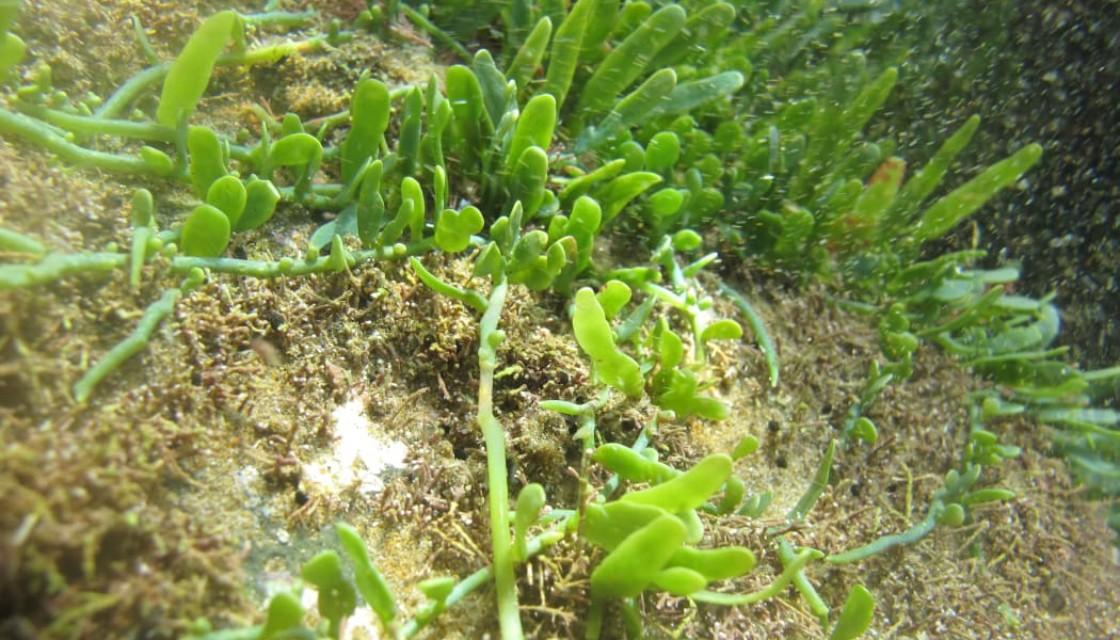
$100M NEEDED TO REMOVE 'CANCER OF THE SEA' - NORTHLAND REGIONAL COUNCIL
Northland Regional Council is asking the Government to urgently pump millions into the fight against the invasive seaweed caulerpa, dubbed "the cancer of the sea".
Council chair Geoff Crawford said $100 million is needed to fight the pest nationwide, and warns the country's fish stocks and shellfish beds are at risk.
Local hapū members showed Newshub footage of an enormous clump of the seaweed pulled up by a yachtie, who anchored in the area where anchoring is banned.
Luckily, they arrived quickly once alerted to his arrival and helped him to remove it, preventing him from transporting the seaweed elsewhere.
"It's actually a national emergency going on here and people don't realise it because they don't see it," Patukeha hapū kaitiaki Bob Clarke said.
Clarke's wife, Louise Clarke - who is of Ngāti Kuta descent - said everyone who saw the mass of caulerpa on the yacht's anchor "couldn't believe how thick and how quickly it has grown in this area".
One of the other locals mucking in on the battle against the seaweed is marine engineer Andrew Johnson, whose world-leading caulerpa removal rig features trommels sourced with Kiwi ingenuity.
"They started life as something out of a gold mine and then as something out of a wastewater treatment plant in Invercargill, and frantically we went around the country and pulled all this equipment together," Johnson said.
The equipment includes a sweeper attached to a digger head to scoop caulerpa off the seafloor, which is then filtered through rotating drums to extract the sand. The sacks of caulerpa are then transferred to shore to be buried, while divers patrol behind to pick up any leftover remnants.
They're managing to remove about 30 tonnes of caulerpa each day. The problem is, there's about 18 hectares in Omakiwi Cove alone.
About $6 million has been spent so far in Northland and the regional council has just allocated another $1 million of ratepayer money, but another $7 million is needed to remove the seaweed from this area in the Bay of Islands.
"We've heard there's only a budget of $5 million for the whole of New Zealand response and that's a real concern for us," council chair Geoff Crawford said.
"We need to move from Omakiwi Bay to the Barrier, because that's where the main cancer is - we call it 'the cancer of the sea' - and it's spreading everywhere."
Crawford said if this work doesn't continue, it'll eventually cover the entire East Coast.
"We really think it's a $100 million operation."
Prime Minister Christopher Luxon said he has spoken to Crawford and said Northland was doing a great job.
"I'm quite concerned about caulerpa and the threat that it represents to New Zealand," Luxon said.
"I know many other countries have been unable to eradicate it, but I think we should do everything we can and use some Kiwi ingenuity to try and solve it."
He said there will be a formal review by the Ministry for Primary Industries of the trial Northland's conducting with the suction dredge equipment.
"We'll get to June 30 with the trial period to see if we've got a proof of concept we can scale up, to see if we can actually deal with this issue.
"If we have to spend more money behind it, we're prepared to do that too."
Johnson said more funding is needed to move from the research and development phase to scale up the equipment for removal of caulerpa nationwide.
Without it, it's game over, he said.
"Essentially it'd be the end of the project, we'd have to pack the equipment up," Crawford said.
2024-07-01T07:19:48Z dg43tfdfdgfd